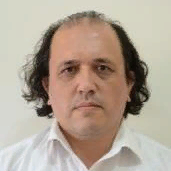
GokhanKoyunlu
Work place: Computer engineering department Nile University Nigeria
E-mail:
Website:
Research Interests: Solid Modeling, Computer systems and computational processes
Biography
Dr. Gokhan Koyunlu Has a Phd in applied Mathematics (2014).He attended Faith University / Istanbul with specialty in Fractional Conformable Partial Differential Equations, Nonlinear systems over signal and Systems , Modeling and Simulation.
Author Articles
Stabilization of Ball-On-Sphere System with Super Twisting (ST) Sliding Mode Control (SMC) as a Method of Chattering Reduction
By Usman Mohammed Suleiman U. Hussein GokhanKoyunlu
DOI: https://doi.org/10.5815/ijem.2020.05.01, Pub. Date: 8 Oct. 2020
A SMC for the ball-on-sphere system was designed in this work. The mathematical system’s model was first derived and a SMC was designed. Then, Lyapunov’s method was used to test for the convergence on the sliding surface, and convergence of the system's states to the sliding surface was guaranteed. To reduce chattering, a super twisting SMC was designed. A controller that is linear was first given to the system and the simulation results showed that, while there is disturbance, achieving origin’s asymptotic stability is not viable. A SMC was then applied next, while there is disturbance, origin’s asymptotic stability was attained in finite-time. Then a 2nd order SMC was applied and the results showed faster origin’s asymptotic stability in finite time. Therefore, the real effect of applying a 2nd order SMC is faster asymptotic stability of the origin1. To reduce chattering, a ST SMC was applied and the chattering was observed to be reduced efficiently.
[...] Read more.Design and Construction of a Prototype Wireless Power Transfer Device
By Oluseun.D.Oyeleke Sadiq Thomas Petrus Nzerem GokhanKoyunlu
DOI: https://doi.org/10.5815/ijem.2019.02.02, Pub. Date: 8 Mar. 2019
This project is aimed at developing a prototype wireless charging system that allows for charging convenience using wireless charging also called inductive charging. This allows charging to be made easier and free from connecting leads between charger and handset.
In order to successfully achieve this task, the design of the prototype was developed in two parts, a transmitter with resonator and a receiver with resonator. The transmitter converts DC voltage to AC, and transfers energy wirelessly through an LC resonator to the receiver through mutual induction, and hence induces EMF in the receiver. The EMF is rectified, filtered and regulated and output is used to charge mobile phones.
Testing results and measurements taken on this prototype shows that significant amount of EMF can be induced at receiver through air coupled transformers due to EM waves at high frequencies. The charging distance is 3cm maximum with end-to-end coupling.
Other Articles
Subscribe to receive issue release notifications and newsletters from MECS Press journals